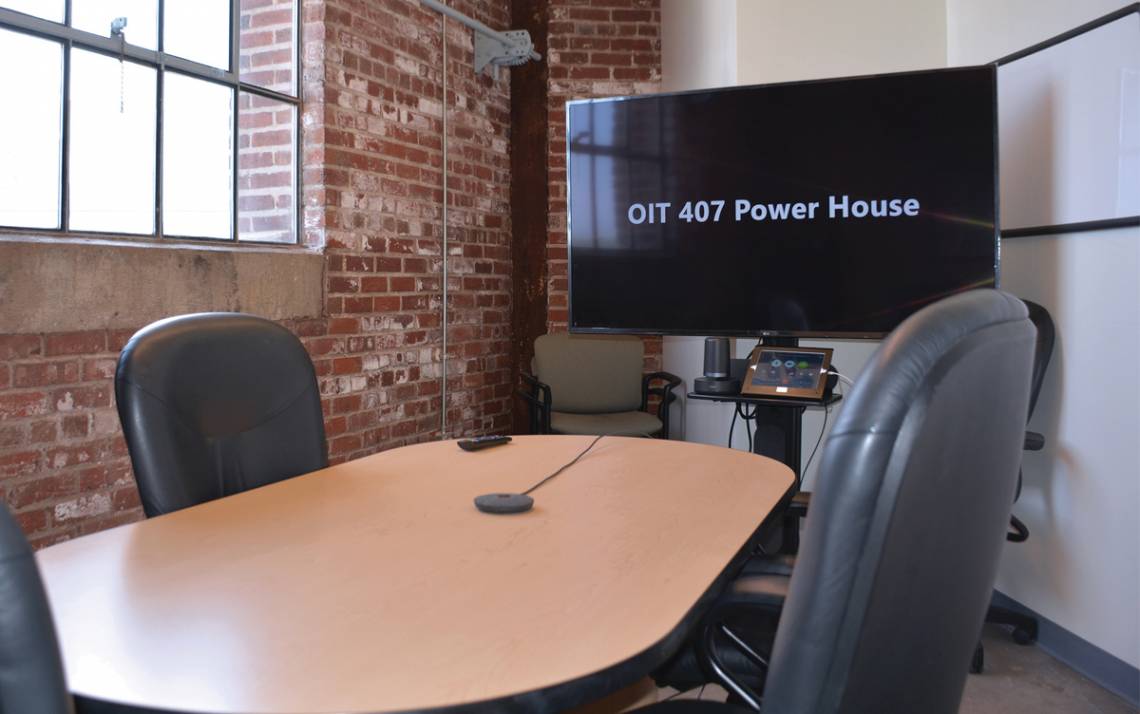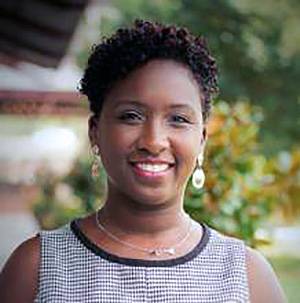How to Conduct Hybrid Meetings
With Duke work teams remote and on-site, meetings experience more change

This fall, the PRATTically Speaking Toastmasters Club faced a situation familiar to many work teams around Duke.
With some members returning to campus, in-person club meetings at the Pratt School of Engineering became a possibility. But with many members staying remote, the club has been exploring options for
hybrid meetings.
 “We are still figuring out how we will do it,” said Maggie Gatongi, biomedical engineering senior lab administrator and member of the PRATTically Speaking Toastmasters Club.
“We are still figuring out how we will do it,” said Maggie Gatongi, biomedical engineering senior lab administrator and member of the PRATTically Speaking Toastmasters Club.
The pandemic turned video teleconferences into everyday occurrences, but as on-site work returns, groups are learning how to run effective meetings with both in-person and remote participants. Here’s what some Duke colleagues have learned about hosting hybrid meetings:
Preparation is Crucial
 While advance planning is important, hybrid meetings require more pre-meeting steps, such as knowing whether you’ll need a real or virtual whiteboard, sharing login information and providing good audio.
While advance planning is important, hybrid meetings require more pre-meeting steps, such as knowing whether you’ll need a real or virtual whiteboard, sharing login information and providing good audio.
Duke Credit Union Chief Executive Officer Daniel Berry has held hybrid meetings since last fall with both on-site and remote participants who all log onto meetings on Zoom. He’s found that it’s crucial to double-check to avoid weak wi-fi or malfunctioning microphones, which could derail a gathering.
“You have to think about what kind of challenges you might face and take steps to mitigate them,” Berry said.
Engagement is Everyone’s Responsibility
 Martay Smith, director of human resources for the Office of Information Technology (OIT), has seen hybrid meetings from multiple angles, participating remotely and in-person.
Martay Smith, director of human resources for the Office of Information Technology (OIT), has seen hybrid meetings from multiple angles, participating remotely and in-person.
She’s found that people on both sides must take steps to stay engaged. In-person participants should solicit input from remote members and make sure they can see presentations and have copies in advance of materials handed out. And everyone should feel comfortable setting up separate conversations through one-on-one video meetings or phone calls if something is unclear.
“You have to be very intentional,” Smith said. “I’ve found it’s actually pretty easy to ask someone to take a conversation offline or follow up later.”
Consider a ‘Zoom Room’
 There are 110 conference rooms set up as ‘Zoom Rooms’ for use by individual departments across campus. Featuring large screens, cameras, microphones, and equipment that runs Zoom, these spaces enable in-person and remote participants to interact together in real time. On-site participants see virtual counterparts on a large screen, while remote users see the in-person group through a camera in the meeting room.
There are 110 conference rooms set up as ‘Zoom Rooms’ for use by individual departments across campus. Featuring large screens, cameras, microphones, and equipment that runs Zoom, these spaces enable in-person and remote participants to interact together in real time. On-site participants see virtual counterparts on a large screen, while remote users see the in-person group through a camera in the meeting room.
OIT continues to create Zoom Rooms as departments request and purchase them. If interested, contact OIT to evaluate your space and meeting needs.
“The system OIT came up with is very easy to use,” said Steve Palumbo, director of Facility Operations in Facilities Management. “It’s got great audio and visual capabilities. We’re big fans.”